Bob Bannon’s garden is a botanically rich shady garden in Queensland. He shares about the evolution of his garden and design and plant choices through the years.
Introduction
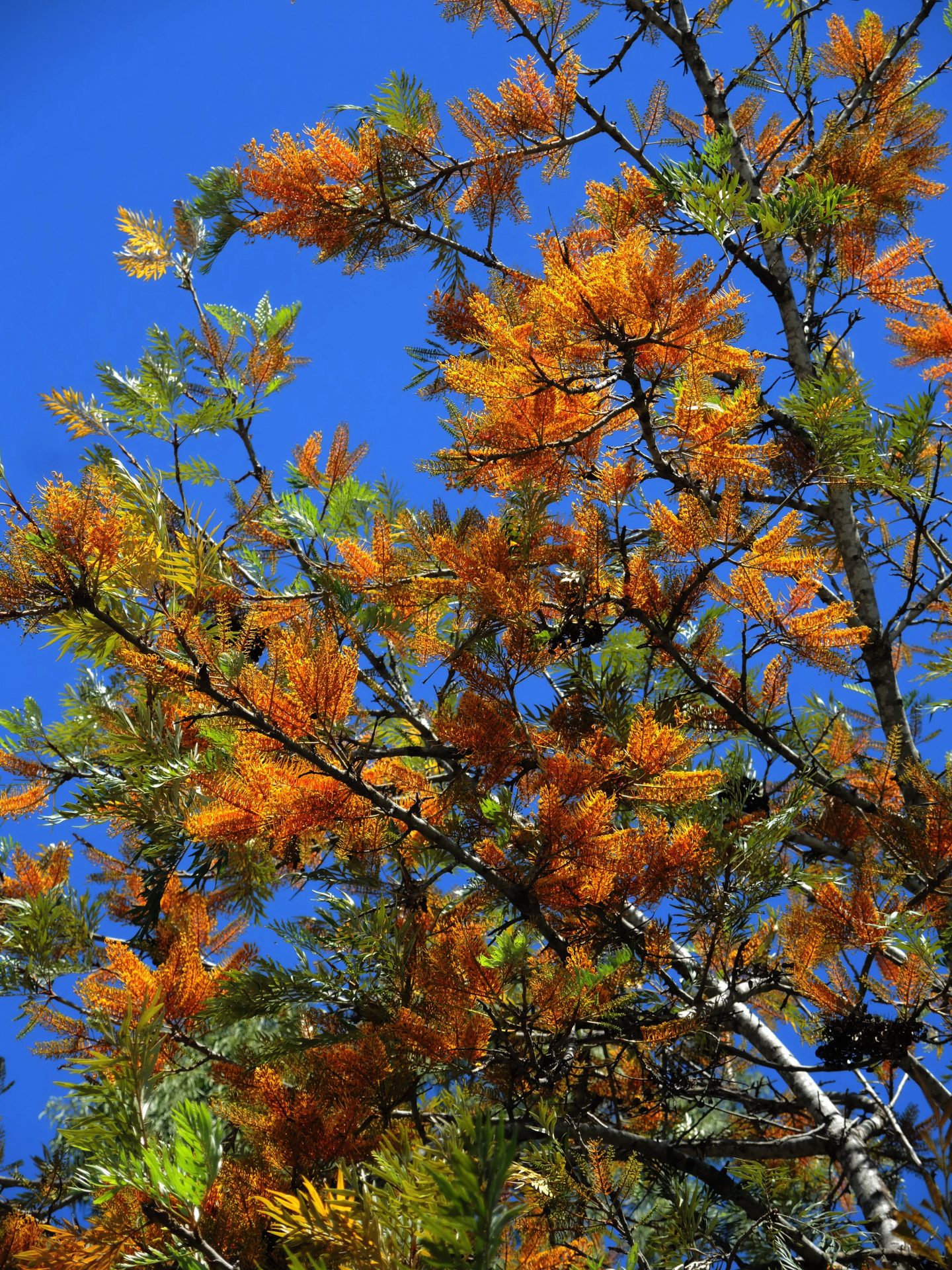
We moved to our house at Bray Park in November 1976. Bray Park is about 26 km north of Brisbane.
We received two pieces of advice on moving there.
One was to plant a grevillea a work colleague gave us, “Gets lovely orange flowers”.
The other advice was to join the Australian Plants Society, now called Native Plants Queensland (NPQ). Pine Rivers has a branch!
Fast forward 45 years, the Silky Oak or Grevillea robusta, which was the grevillea we were given, went about five years ago at 16 metres high (on a 609 sq metre block).
And we’re still in Pine Rivers Native Plants Queensland.
Removing the shade creates a growth spurt
With the removal of the Silky Oak, the rest of the trees/shrubs discovered a new life putting on a growth spurt which continues today. The existing trees have all headed onwards and upwards. These include, with some illustrated below:
- Barklya syringifolia (Crown of Gold)
- Mrysine variabilis (Muttonwood)
- Glochidion ferdinandi (Cheesetree)
- Backhousia citriodora (Lemon-scented Myrtle)
- Mallotus claoxyloides (Smell of the Bush)
- Xanthostemon chrysanthus (Golden Penda)
- Stenocarpus sinuatus (Wheel of Fire Tree) and
- Harpullia pendula (Queensland Tulipwood).
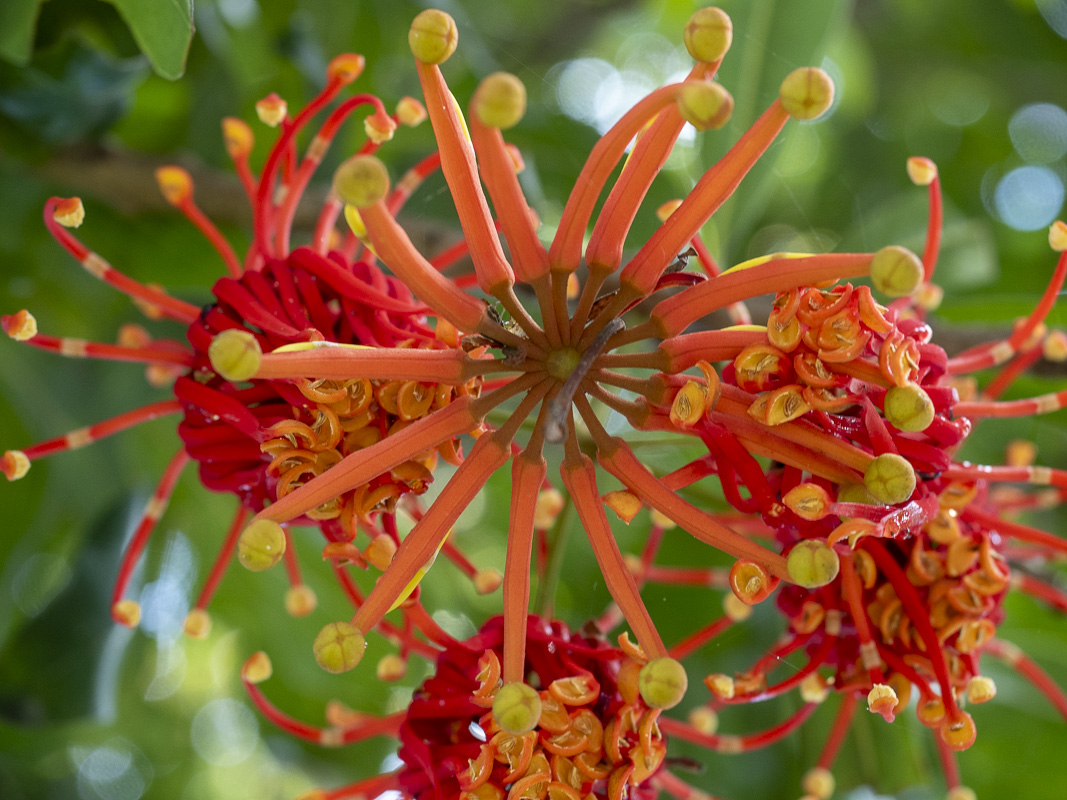
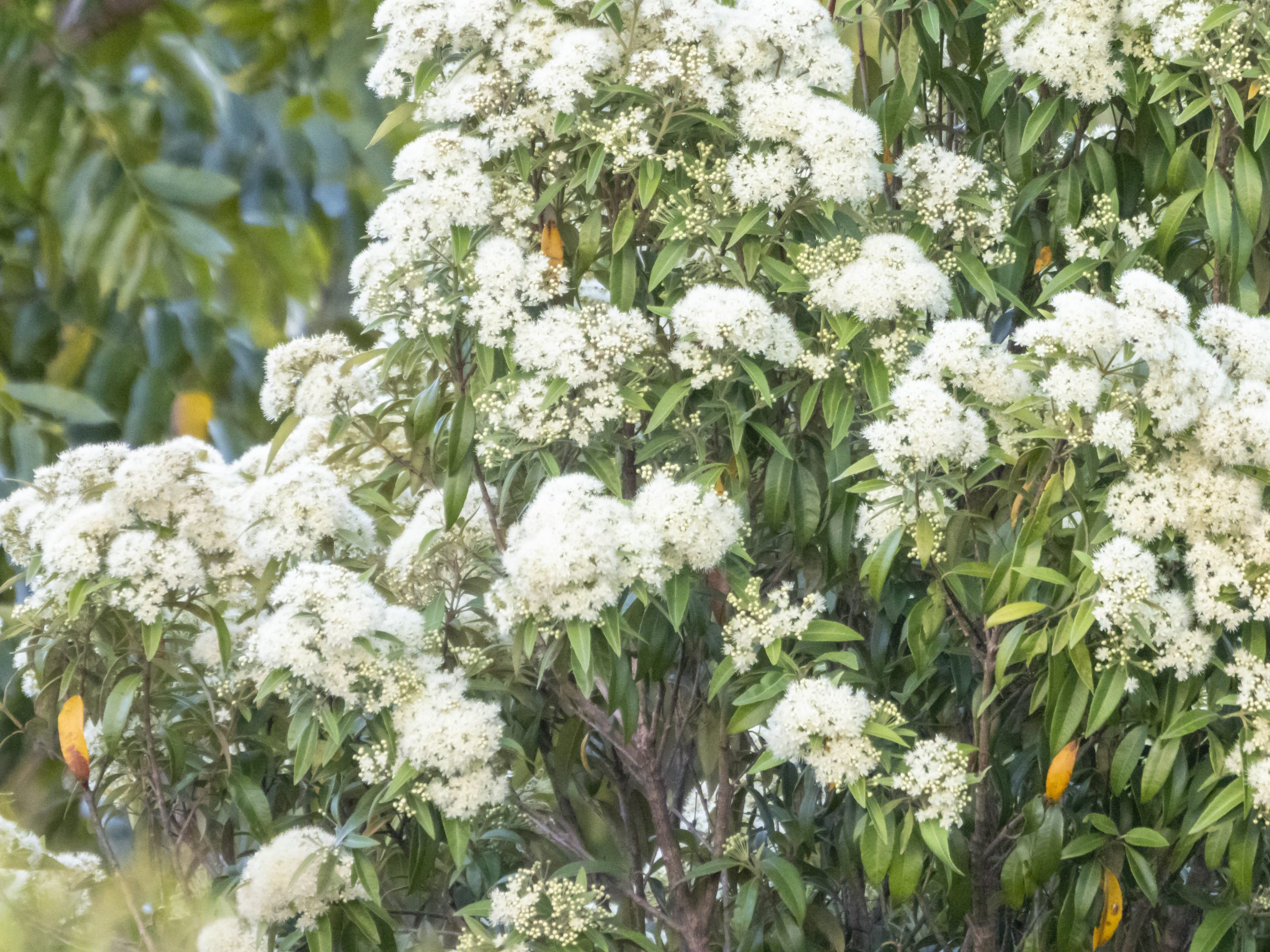
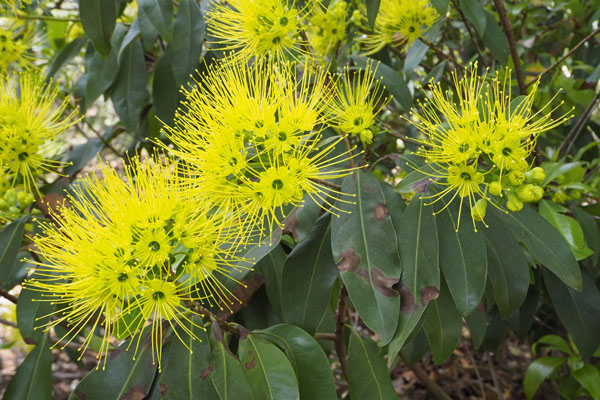
A tall hedge of Syzygium paniculata (Magenta Lilly Pilly) on the western boundary, ensures a well-shaded backyard from the afternoon sun.
Backyard revamp given shady conditions
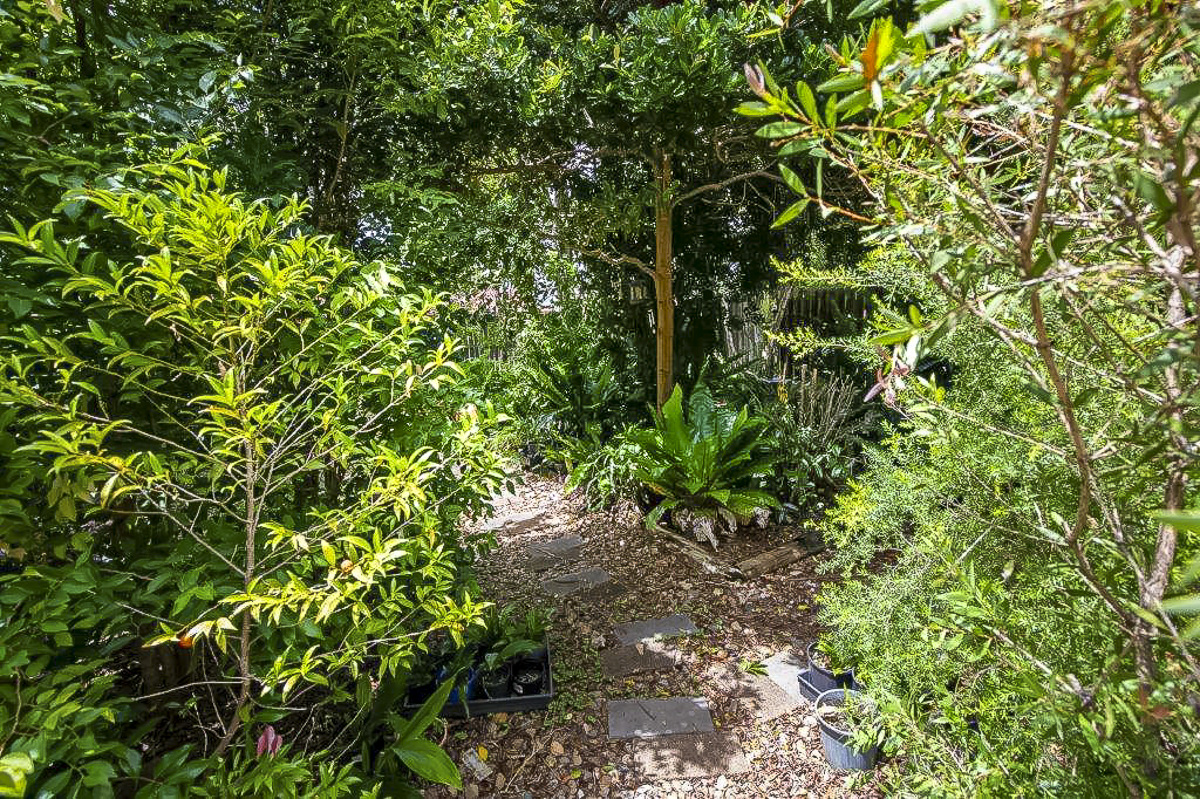

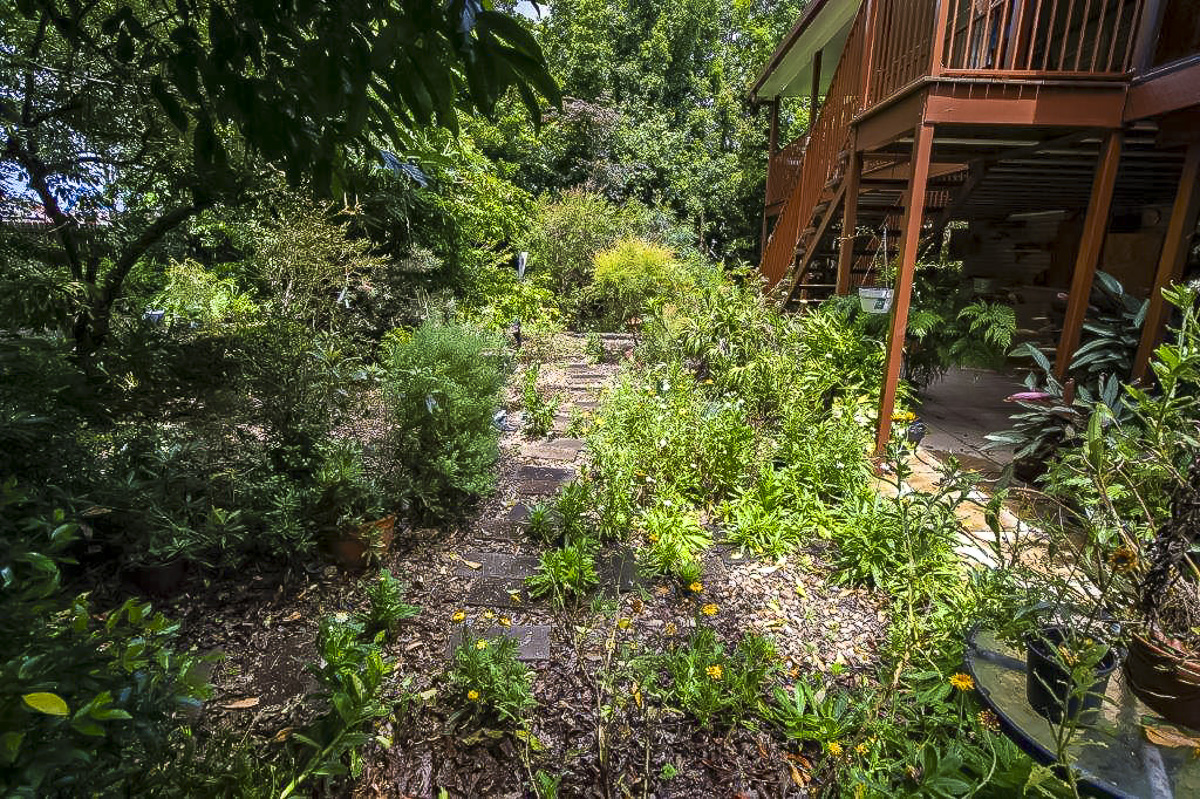
As we have a northerly aspect, in winter the sun barely sees the backyard. It was an easy decision to remove the grass.
We covered the area with cardboard and a healthy load of forest blend mulch and planted several shrubs and smaller trees. These include Commersonia salviifolia (syn. Rulingia salviifolia) (Grey Rulingia), Phyllanthus cuscutiflorus (Pink Phyllanthus), Syzygium ‘Cascade’, Melicope rubra (Little Evodia), Hibiscus ‘Aussie Pink’ (about to be severely pruned), to name a few.
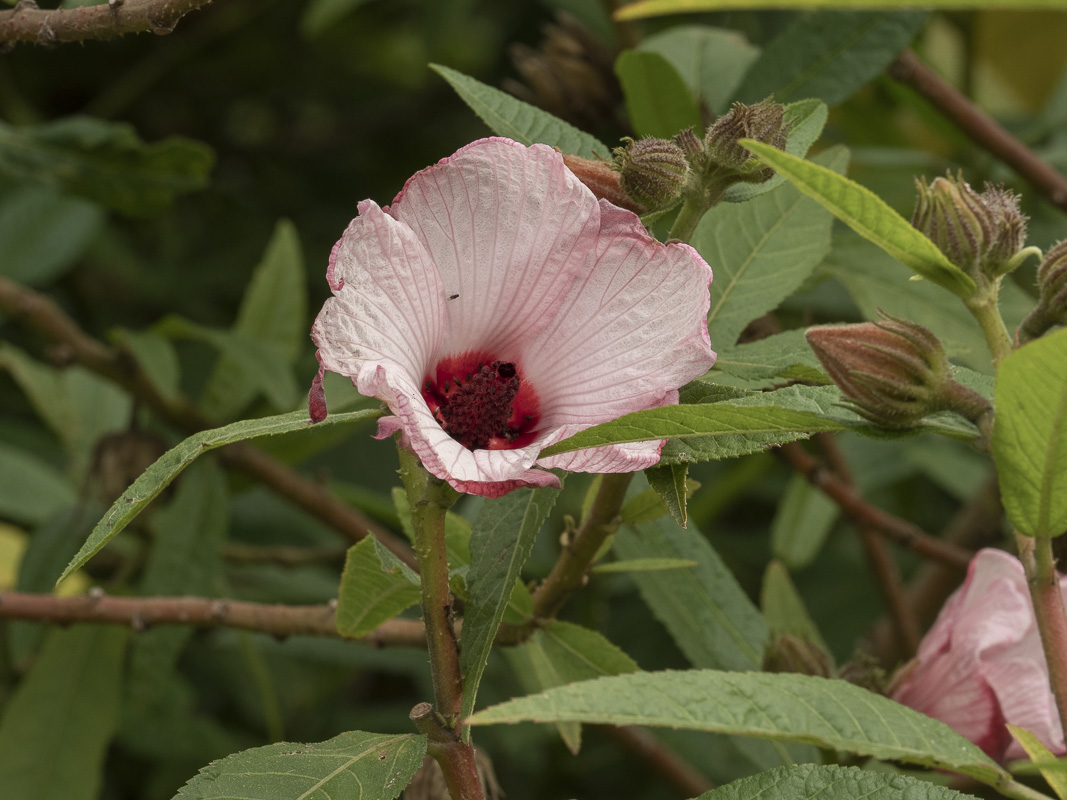
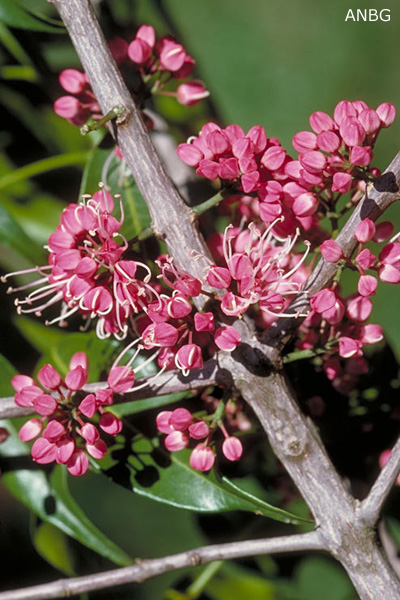
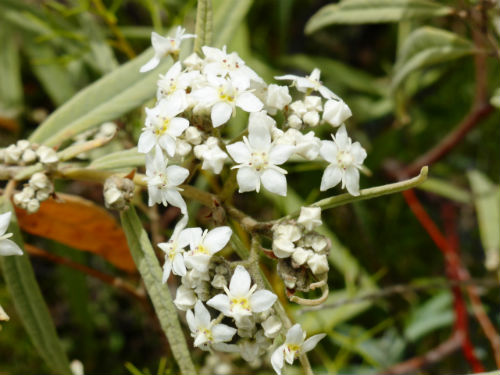
We’ve discovered over the past few years that Grevilleas really DO like full sun and struggle without it! A couple of bottlebrushes, Melaleuca ‘Reeve’s Pink’ and Melaleuca ‘Prestige Pink’, are coping well, receiving sun for a good part of the day in summer.
Understorey of ferns and other shade lovers
Given the shade, the understorey plants are mainly ferns. These include many Asplenium australasicum (Crows Nest Fern), Drynaria rigidula (Basket Fern), D. rigidula ‘Whiteii’, various lillies such as Crinums, Coleus spp. (formerly Plectranthus). Violas act as a scrambler/groundcover and hoyas love climbing through the trees.
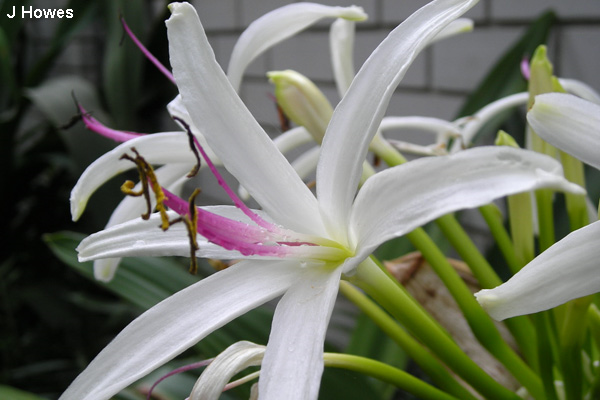
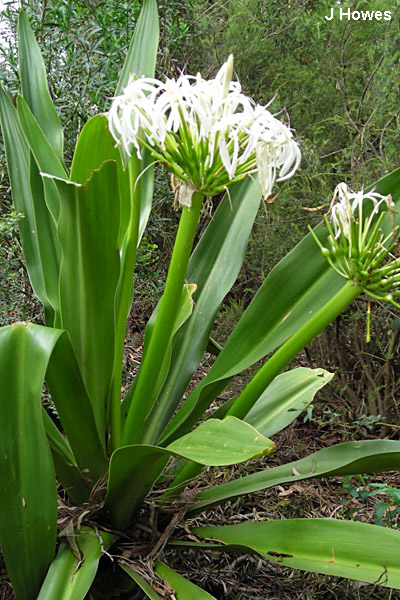
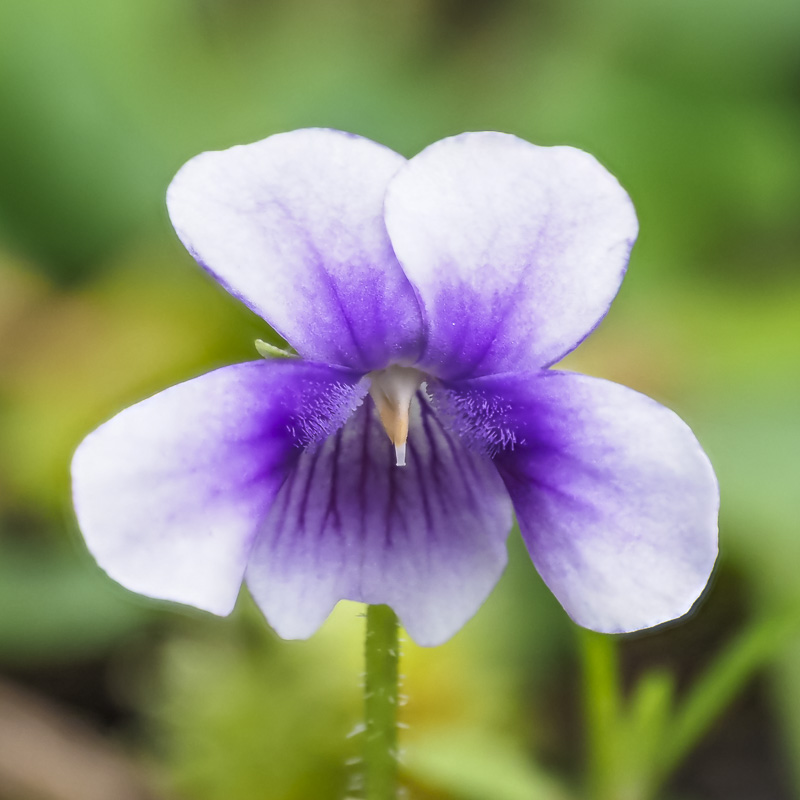
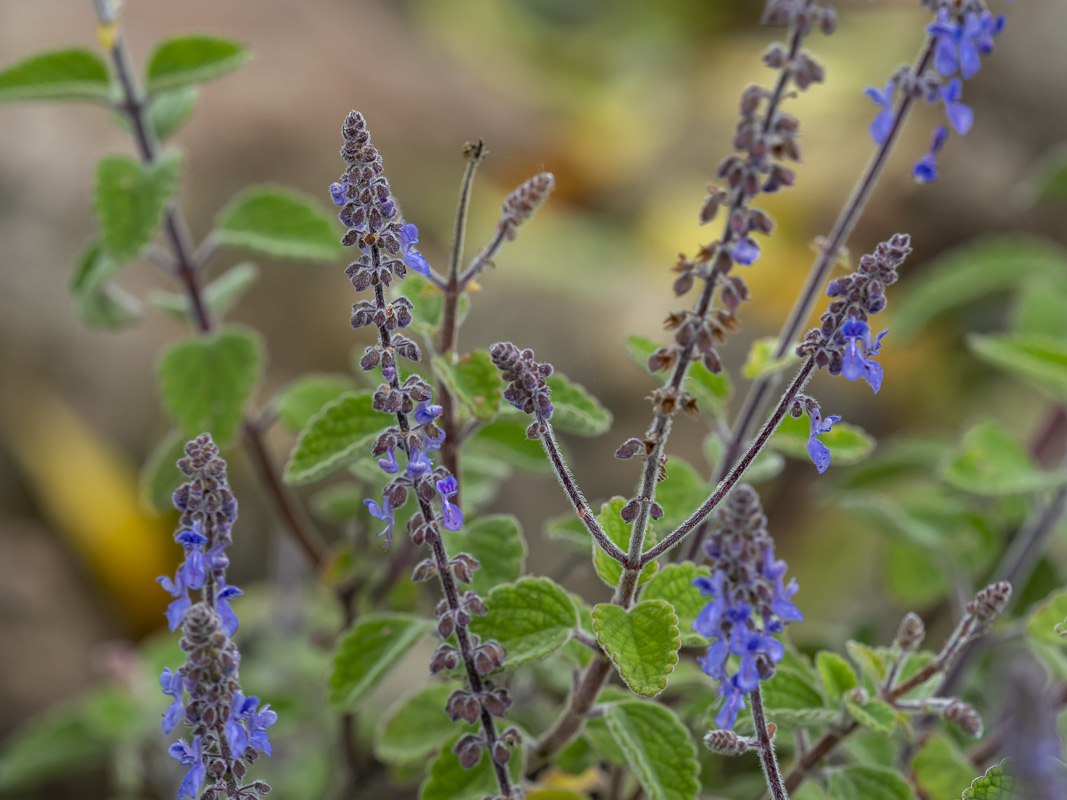
Dianella caerulea and Dianella caerulea var. assera fill in some of the gaps. Orchids meander through the foliage and are always a joy to find in flower in spring.
Phaius australis (Swamp Orchid) are spectacular to see and require little care in S.E. Queensland. Goodenia ‘Gold Cover’ has been successful where there are the rare glimpses of sunshine and Scaevola albida, although slower (read forever) to establish, has survived the lower light conditions.
Orthosiphon aristatus (Cat’s Whiskers) is a marvellous plant able to withstand many varied conditions and will tolerate shade to full sun conditions. It does need some warmth during winter, so the southern climes mightn’t suit it. The white form is more tolerant than the purple.
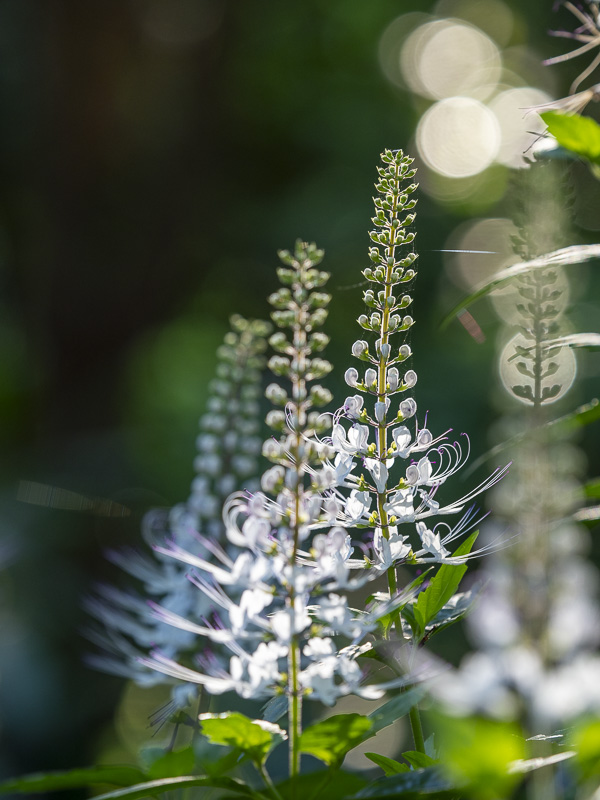
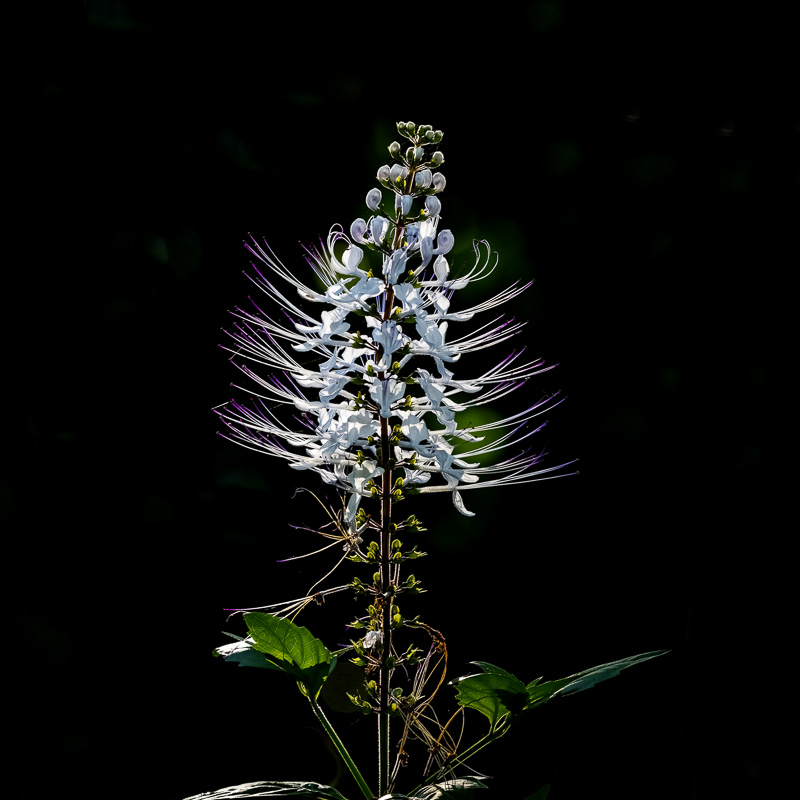
While 99% of our garden is natives, I don’t mind some exotics in pots. I particularly like “indoor” types – Spathiphyllums, Aspidistras, Begonias and various Calatheas, and Zygocactus. As a result, there are several species in pots scattered around the garden. Generally, they are easy to propagate, and are good as giveaways to visitors, who may not have room for a shrub or tree.
So far, it’s been all about the back garden.
The front garden is also shady!
The front garden is not too much different, apart from the driveway taking a large “chunk”.

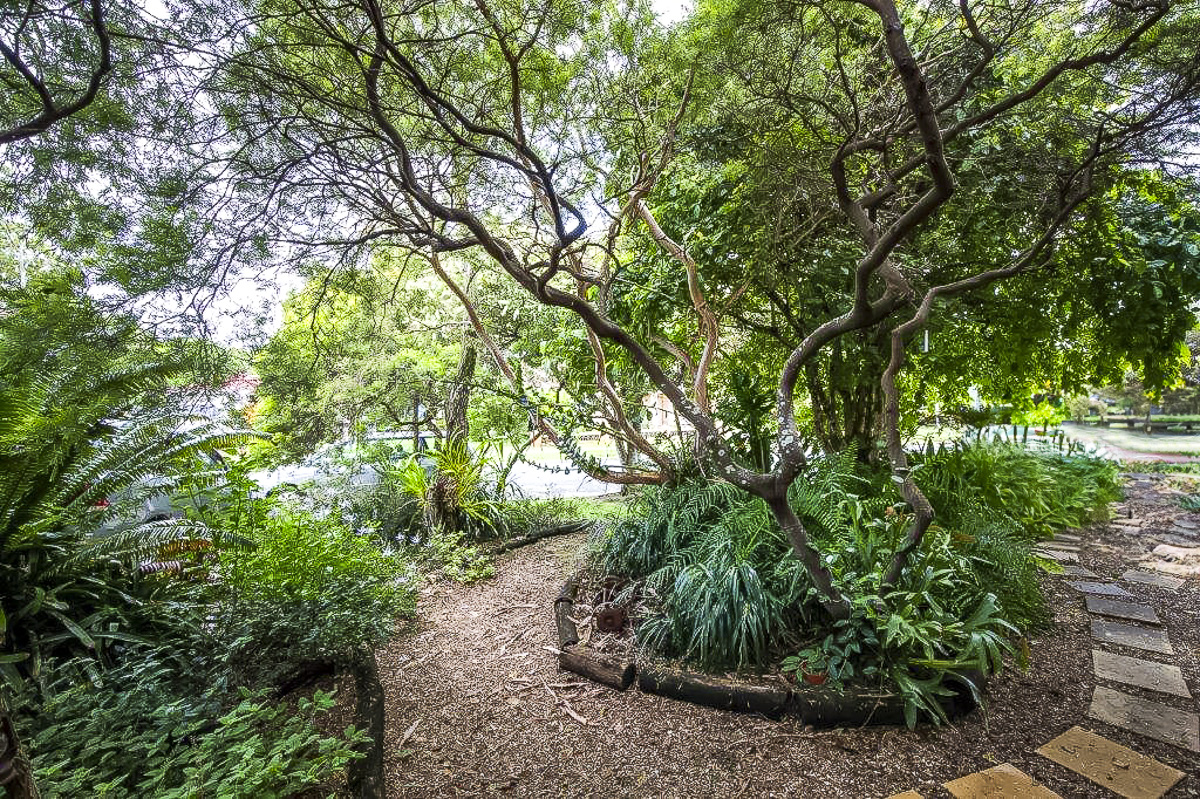
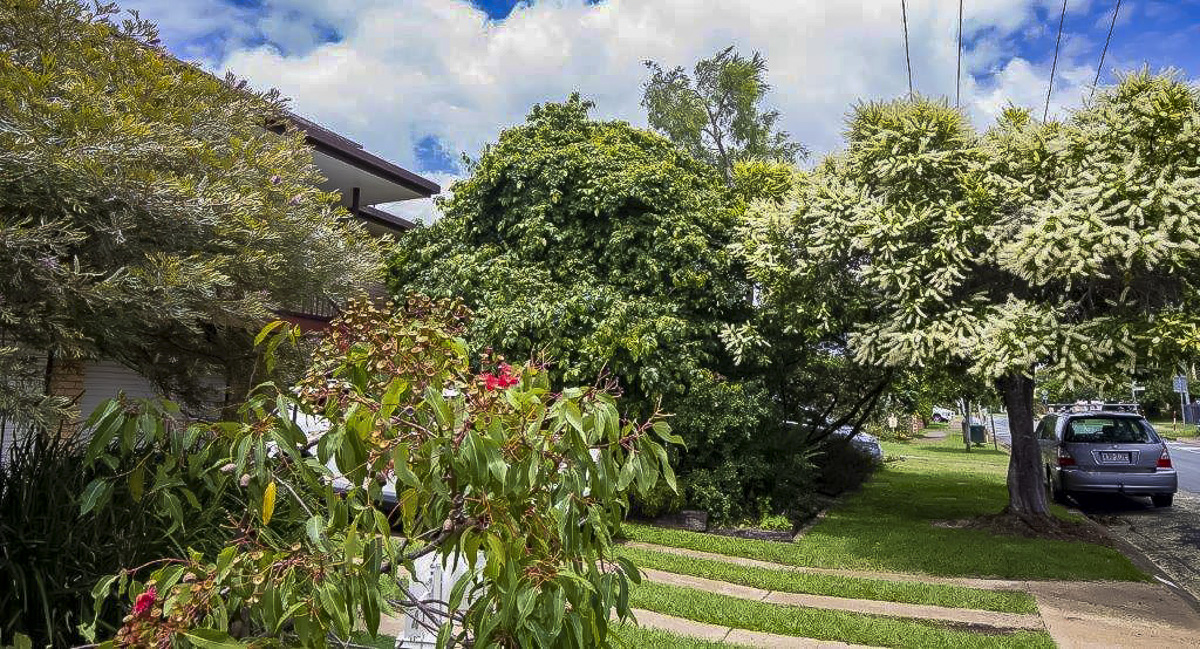
Facing north, one would consider Grevilleas would be the item of choice. Partially correct! On the eastern side a small bed in full sun, consists of a Corymbia ‘Summer Red’, which seems to be remaining at about the three metre height. Currently (January 2022), it heralded the New Year in in full flower.
Behind the Corymbia is a Grevillea ‘Dorothy Gordon’ which is about 4 metres by 4 metres and constantly full of flowers and lorikeets. (Hmm. I did something right.) A Lomandra longifolia (Long-leaf Mat Rush) and Dianella caerulea var. assera also occupy the garden.

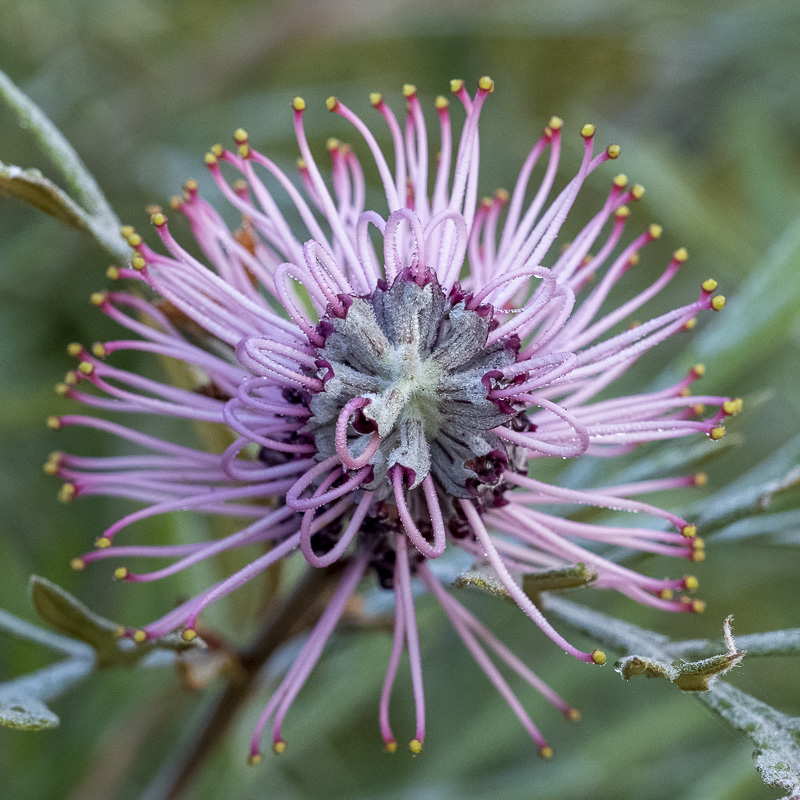
Western side of the front garden
The Western side of the driveway and on the footpath (verge for southerners) is a Buckinghamia celcissima (Ivory Curl). This Buckinghamia is constantly pruned by our good friends at Energex and has spread out, similar to a small Poinciana. The result of this has shaded the front garden for over forty years.
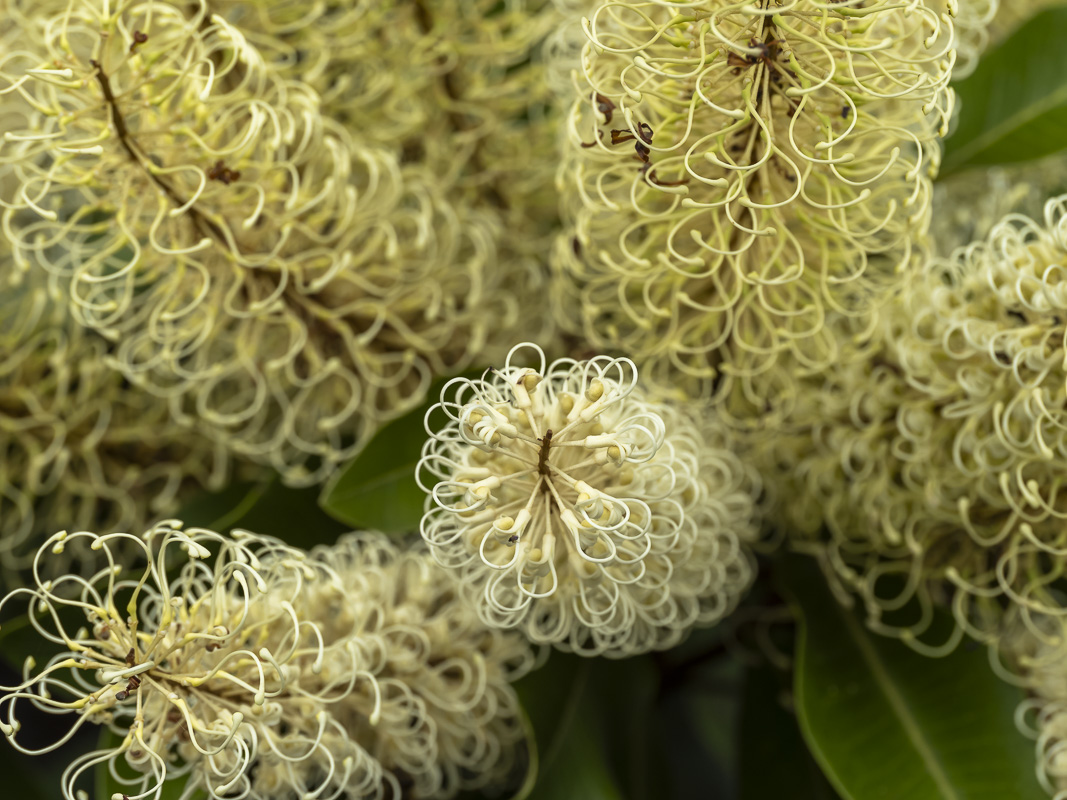
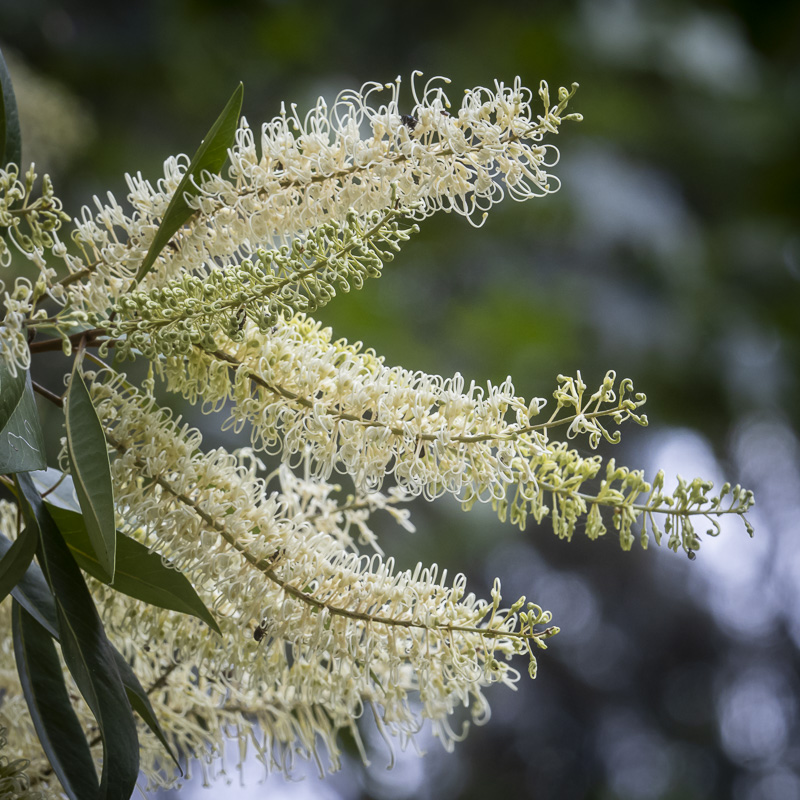
How’s that for good planning?
Not to be outdone, I was at a school fete, probably 35 years ago, and from 100 metres away could smell a Mallotus claoxyloides. And there it was in a 150mm pot in amongst hundreds of plants. This to be a mate for the one in the backyard which didn’t have the familiar “Smell of the Bush’. In it went, along with a Leptospermum madiddum, two Acacia fimbriata ‘Dwarf’ (really??) and an existing Melaleuca viminalis. The front yard is just as shaded as the backyard.
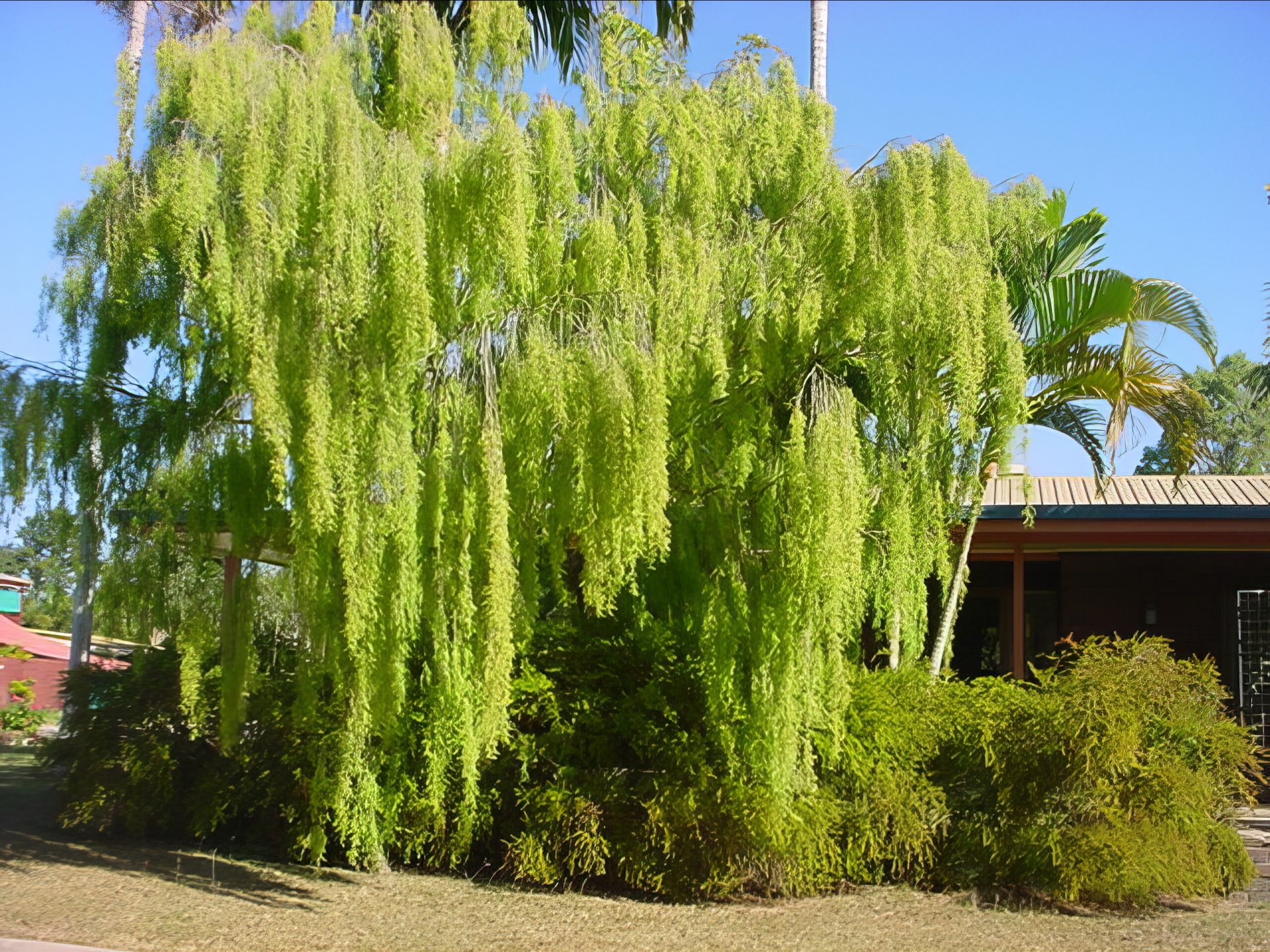
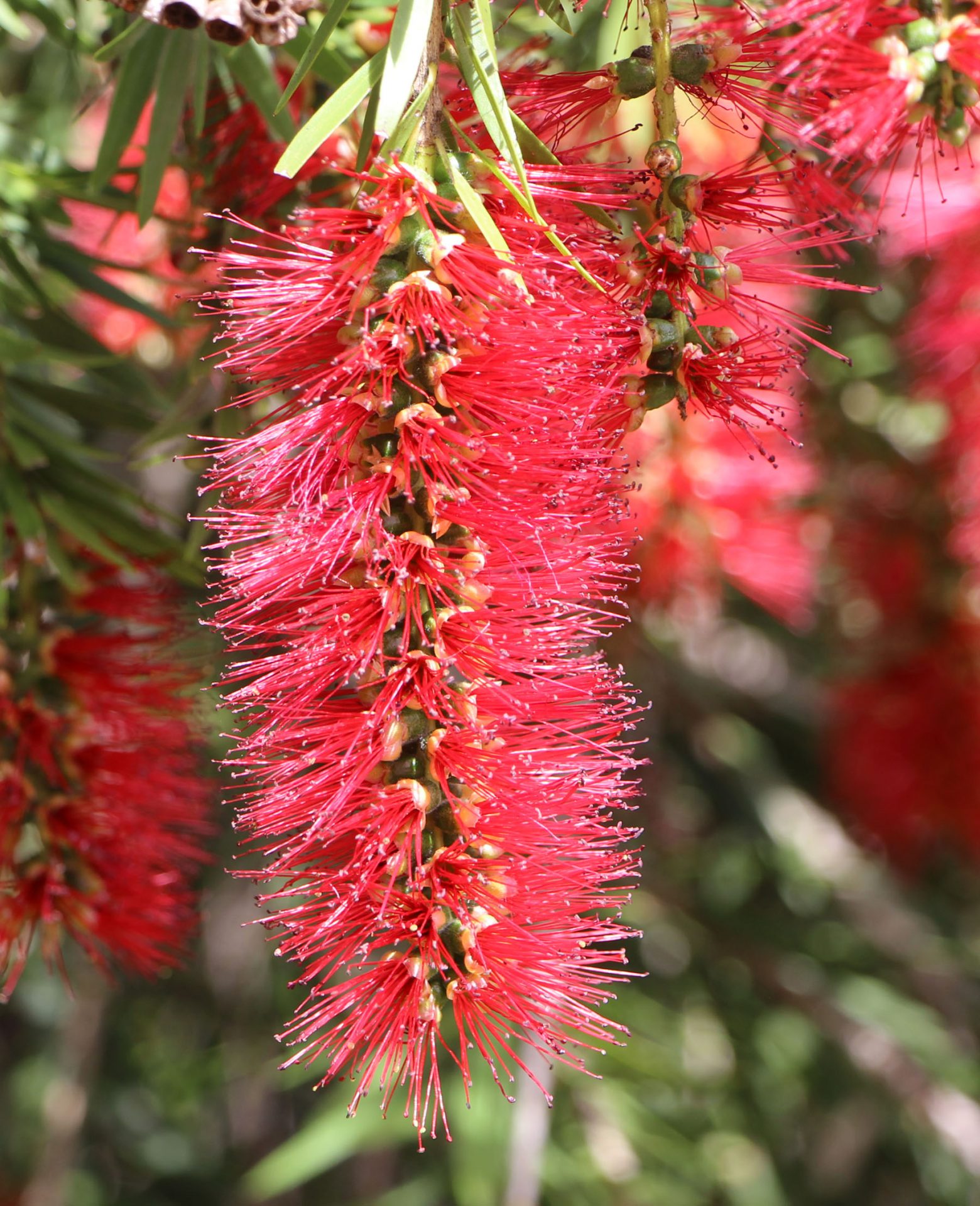
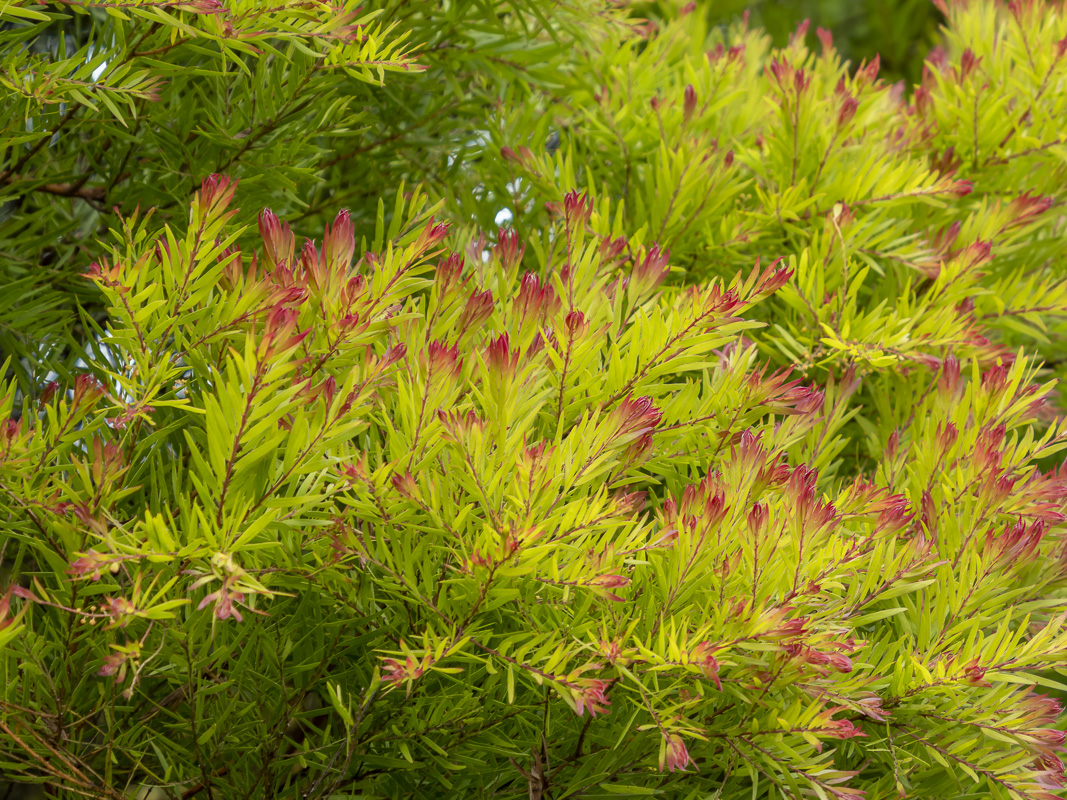
Understorey plants in this garden are now similar to the backyard but include Austromyrtus dulcis (Midyim). It gets late afternoon sun and works well. More Orthosiphon aristatus (White flowering form) and Drynaria rigidula (Basket Fern), Psychotria daphnoides (Smooth Psychotria), Cordyline rubra, a small-growing form of Syzygium paniculata Magenta Lilly Pilly), and an Elkhorn (Platycerium bifurcatum) or two. Several Adiantum spp. (Maidenhair Ferns) are throughout the garden as a whole.
The side gardens consist of Callicarpa pedunculata (Velvet Leaf) and Synostemon albiflorus (Showy Sauropus) on the western side and a single Synostemon albiflorus on the eastern side. Probably about three hours of sun a day.
Natural pruning by a possum!
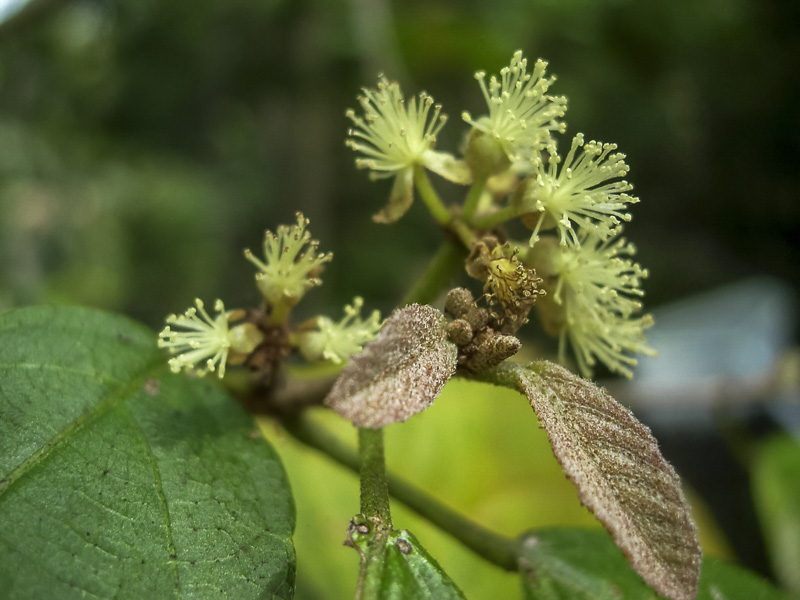
Many years ago, we had a resident possum living (during the day) in a potted palm on our front verandah, coming and going as she pleased, along with her bubs.
Every night she would head out and give the Mallotus a graze, keeping it to a good height and bushing it up nicely.
Our little possum has long gone but not so the Mallotus. This tree provides marvellous shade and gives us a wonderful perfume, not only from its leaves but the scent of the flowers is beautiful. The bees obviously think so too, as they swarm in with a loud hum when it’s flowering.
Strangely enough, it seems that Mallotus is the right tree in the right place.
Gotta have a win sometime.
 Australian Native Plants Society (Australia)
Australian Native Plants Society (Australia)